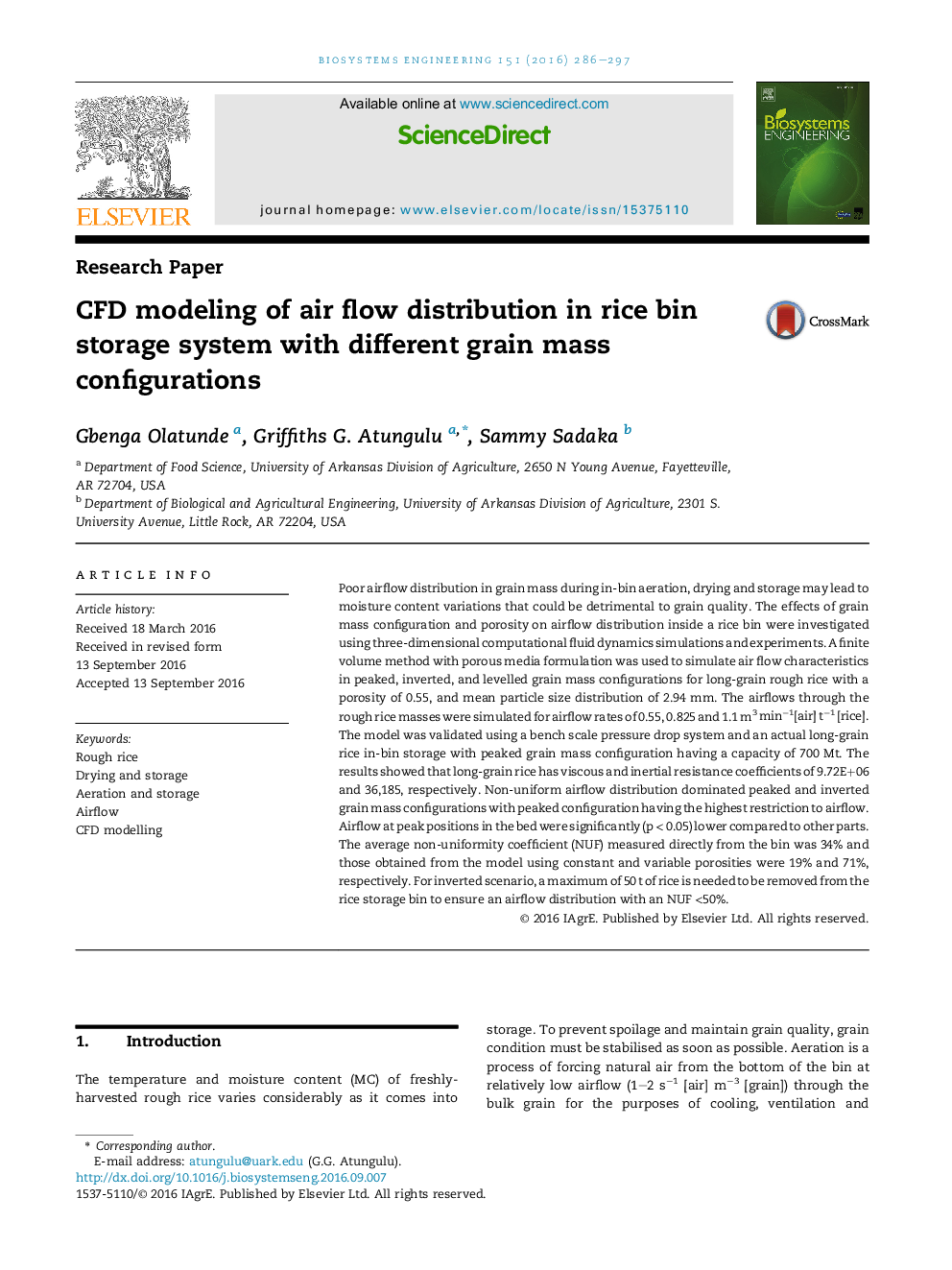| Article ID | Journal | Published Year | Pages | File Type |
|---|---|---|---|---|
| 8055009 | Biosystems Engineering | 2016 | 12 Pages |
Abstract
Poor airflow distribution in grain mass during in-bin aeration, drying and storage may lead to moisture content variations that could be detrimental to grain quality. The effects of grain mass configuration and porosity on airflow distribution inside a rice bin were investigated using three-dimensional computational fluid dynamics simulations and experiments. A finite volume method with porous media formulation was used to simulate air flow characteristics in peaked, inverted, and levelled grain mass configurations for long-grain rough rice with a porosity of 0.55, and mean particle size distribution of 2.94 mm. The airflows through the rough rice masses were simulated for airflow rates of 0.55, 0.825 and 1.1 m3 minâ1[air] tâ1 [rice]. The model was validated using a bench scale pressure drop system and an actual long-grain rice in-bin storage with peaked grain mass configuration having a capacity of 700 Mt. The results showed that long-grain rice has viscous and inertial resistance coefficients of 9.72E+06 and 36,185, respectively. Non-uniform airflow distribution dominated peaked and inverted grain mass configurations with peaked configuration having the highest restriction to airflow. Airflow at peak positions in the bed were significantly (p < 0.05) lower compared to other parts. The average non-uniformity coefficient (NUF) measured directly from the bin was 34% and those obtained from the model using constant and variable porosities were 19% and 71%, respectively. For inverted scenario, a maximum of 50 t of rice is needed to be removed from the rice storage bin to ensure an airflow distribution with an NUF <50%.
Keywords
Related Topics
Physical Sciences and Engineering
Engineering
Control and Systems Engineering
Authors
Gbenga Olatunde, Griffiths G. Atungulu, Sammy Sadaka,
